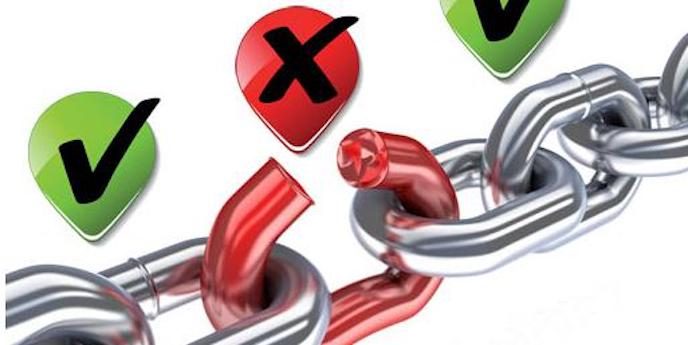Lately, Google has been making some serious changes to their algorithm and guidelines. With these changes comes the potential of losing rankings within the SERP’s if you’ve been caught off guard and haven’t been following the do’s and don’ts. To overcome the search changes, I’ve been writing content about Google Panda, Google Places, and the Disavow Tool. However, recently, I received an email from one of my readers, asking me for a detailed breakdown of the type of links he should focus on when using the disavow tool. When I sent him a link to the content I wrote on bad links and what to look for, he replied asking me for some more details. I decided to write this content to add to my series on Google algorithm. Next,

It makes complete sense why, for some people, it’s hard to find EXACTLY what types of links are bad for your profile. For example, some can be natural links, some unnatural, and others that have been suspected of spamming from the last update. The problem is, if you’re getting links from any of these types of websites, then you can see a sudden drop in your rankings. Let’s jump into the fundamentals of link classification and what to look for when going through your “links†in Google Webmaster Tools. I’ll breakdown the content into the following…
- Natural links
- Unnatural links
- A spam domain
Let’s get started…
Natural links
Sometimes you’ll be put in a position where you’ll have to disavow a natural link because the website is NOT following the Google guidelines. These types of links are very tough to sort out because you have to know the Google guidelines to recognize a website NOT following the rules. For example, if you visit the Google Guidelines, they have a clear indication on what type of content is appropriate. For example, look under Design and Content Guidelines to get a better idea of what is acceptable by Google. It’s your job to go through the list of external links pointing to your website and visit each to distinguish which one of them are a valuable link. Here’s what I recommend,
Because this has to be done every several months, I would hire an auditor to go through the links for you. Depending on where you search, you’ll be able to find one from $50-$350/per session. The price will depend on how many links you’ll like them to go over, etc.
So, what are natural links…
- Sites that are credible and been around for years.
- High domain age, domain authority, and page authority
- Unique high quality content
- Frequently updated
- Images that have been used after receiving permission. They have a resource links and it’s clear they give credit where deserved.
- Sites with a large social media profile
You have to remember many of these websites provide users with natural links, but sometimes fall victim to NOT following Google’s general guidelines. I suggest knowing the rules and to go through your link profile roughly 2-3 per week.
Unnatural links
The difference between “natural†and “unnatural†is very clear cut, starting with the fact that unnatural links are built from websites with spun content or low quality content. Google has further outlined unnatural links to be from website hosting enormous duplicate or republished content. When skimming through your link-portfolio, it’s important to know how to identify unnatural links. First, you can start by visiting the website and scanning the content to check if it’s smooth and makes sense. Next, perform a quick site audit that can be done from advanced tools or simply copy & pasting content in Google and checking to see if it pops up anywhere else. Basically, unnatural links are from sites hosting content other than natural linking sites above. Unnatural linking websites are already not following the Google guidelines by duplicating content. Next,
Tiered link building and link wheels are all considered unnatural links because they come from blogs created from a single person to boost their own rankings within the SERP’s.
Spam Domain
After Google issues a manual penalty, there is a chance the blog may be suspended for NOT making the required changes. If the blog continues to not follow the guidelines and refuses to make changes, they’ll be banned. This means any link on the domain is NOT valuable and can hurt your rankings. It’s important to skim through the list and visit each website. If the site doesn’t appear and shows the following message: “This Account Has Been Suspendedâ€, then you know they’ve been removed from the SERP’s. Next,
It’s recommended that a website showing a “suspended†message be removed completely from your profile. Instead of submitting individual pages to be disavowed, I’d recommend to submit the entire URL or root domain. Once Google updates the disavow status on under Webmaster Tools, they’ll remove the whole URL, which will eliminate the spam links pointing to your website.
